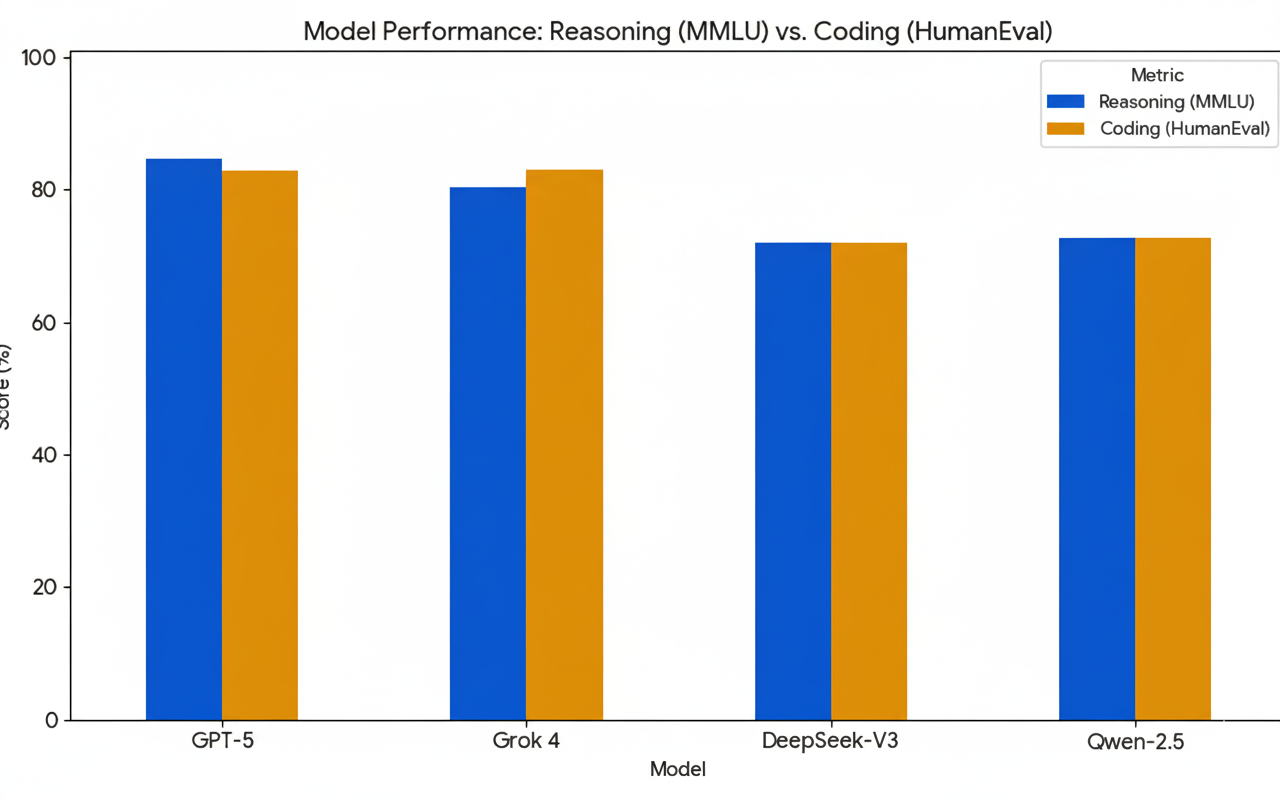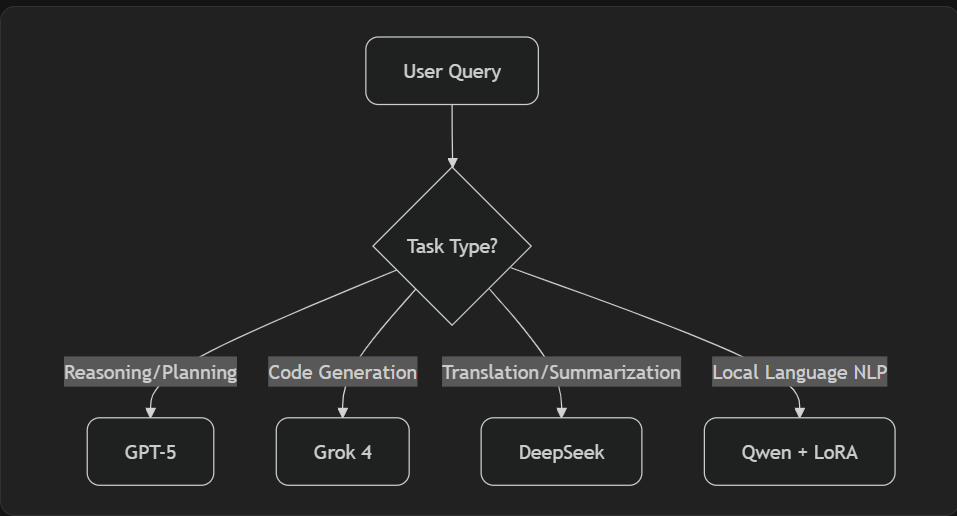The multi-model era is shaping AI strategy
The age of the single super-model is over. No one AI wins across every dimension; reasoning, coding, cost, or reliability.

The multi-model AI era is here
AI models are software system trained on large amounts of data to perform specific tasks like generating text, analyzing images, coding, or predicting trends.
They learn patterns from data and make decisions or recommendations without human intervention. Businesses use these models in many ways: automating customer service, generating content, optimizing supply chains, detecting fraud, or even powering recommendation engines.
GPT‑5 leads in reasoning and complex tasks, Grok 4 dominates coding, and models like DeepSeek and Qwen deliver strong results at a fraction of the cost. No model wins everywhere and that means AI strategy must evolve, changing from relying on a single model to coordinating multiple models for the right task, at the right cost, and with the right reliability.

The impact on strategy and growth
For businesses, this change is massive. Relying on a single AI model is no longer enough, it can leave blind spots, create bottlenecks, and rack up unnecessary costs.
A McKinsey analysis of global enterprises shows that 65 percent utilize AI to optimize workflows, yet many overpay by deploying flagship models for simple tasks, leading to 30–40 percent higher expenses compared to multi-model approaches. A Stanford HAI evaluation report accuracy drop more than 15 percent when models failed on local languages like Swahili and Amharic.
The best model on paper doesn’t automatically translate to the best results in practice. The real challenge is figuring out which model fits which task, and how to deploy it in a way that’s safe, reliable, and scalable.
Businesses can’t rely on raw computing power or high benchmark scores alone anymore. Success now depends on how well AI models are applied, integrated, and trusted in real-world tasks. Questions such as can the AI give accurate results every time? Will it integrate smoothly with products, workflows, or services? And can it reach the right users without friction? must be asked as overlooking these factors can waste resources and cause missed opportunities.
Winning with multi-model AI
The market is already racing toward this multi-model approach.GPT‑5 stands out in reasoning-heavy and agentic tasks, Grok 4 consistently outperforms in coding benchmarks, and lighter models like DeepSeek and Qwen deliver impressive results at a fraction of the cost. For example, DeepSeek recently disclosed a theoretical cost‑profit ratio of 545% per day, claiming that its inference infrastructure cost just $87,072 to run while its daily revenue hit $562,027.
Today, success isn’t measured by who has the biggest or most powerful model, but by who can orchestrate them effectively. That means routing each task to the model best suited for it, fine-tuning with proprietary data, and ensuring every deployment is reliable, safe, and efficient.
From Silicon Valley to Beijing, AI teams are designing pipelines that combine models to maximize speed, accuracy, and cost-effectiveness. The winners will be those who treat AI not as a single tool, but as a flexible ecosystem that adapts to every challenge.
How companies can win
The smartest companies have realized that chasing the biggest or most powerful AI model is no longer the winning strategy. Instead, they focus on building systems that know which model to use for each task and how to connect them seamlessly.
Top teams now build task routers such as lightweight classifiers that inspect inputs and assign them to the optimal model. A user query enters the system, and the router instantly decides: reasoning and planning go to GPT-5, code generation flows to Grok 4, translation and summarization land on DeepSeek, and local language NLP routes to Qwen with a LoRA adapter

Proprietary data gives companies a real edge in the AI era. Exclusive insights about customers, markets, or operations let businesses fine-tune AI models for specific needs, improving accuracy, speed, and relevance. Trust and reliability are equally important: AI outputs must remain consistent, safe, and actionable in real-world applications. By combining proprietary data with robust models and dependable deployment, companies transform AI into a strategic advantage that drives growth, efficiency, and competitive differentiation.
Seamless distribution ensures AI reaches the right users such as employees, customers, or embedded in products. Coordinating multiple models this way delivers faster results, cuts costs, and reduces risk. AI stops being just a technical tool and becomes a strategic advantage, giving businesses the flexibility to adapt and innovate in a competitive landscape.
The path forward
By 2026, the winners won’t be the companies with the flashiest or biggest AI models. They will be the ones who orchestrate multiple models effectively, balancing performance, reliability, and reach.
The multi-model era isa whole new way to approach AI strategy. Companies that master this orchestration will turn AI into a real business advantage.





